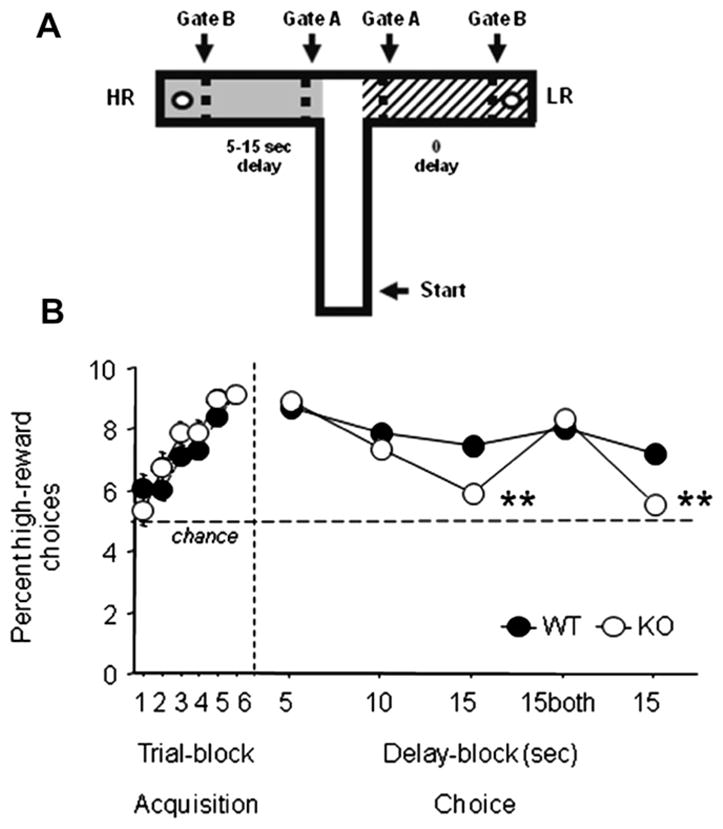Fig. 4.

GluA1 KO mice show increased impulsive choice in a delay-based cost/benefit decision-making task. (A) T-maze apparatus. Mice were placed in the start arm of the T-maze and allowed to choose (Gates A open) between the 2 visually-distinct goal arms, associated with either a high- (HR) or low- (LR) milk reward. On entry into an arm, Gate A was immediately closed and a forced waiting period (5–15 s for HR arm, 0 s for LR arm) imposed before Gate B was opened to allow access to the reward. (B) GluA1 KO mice and WT controls exhibited preference for the HR arm over 6-training sessions (0 delay for HR arm). In both genotypes, HR arm preference was maintained at a 5 s delay and slightly reduced at a 10 s delay. At a 15 s delay, GluA1 KO mice showed less HR-arm preference than WT controls. When both arms were HR at the 15 s delay, genotypes did not differ, but GluA1 KO mice again showed less HR arm preference when the 15 s delay was reinstated. n = 15–20 per genotype. Data are Means ± SEM. **p < .01 WT vs. KO.
